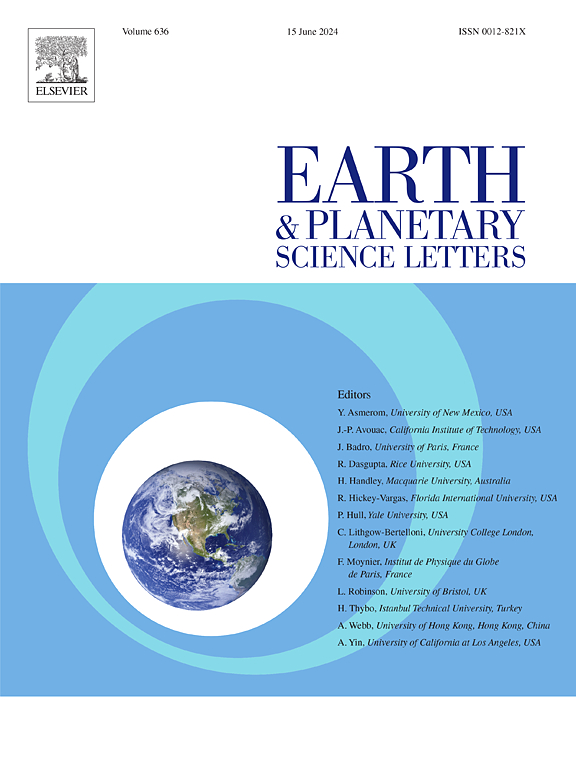The evolution of planetesimal reservoirs revealed by Fe-Ni isotope anomalies in differentiated meteorites
IF 4.8
1区 地球科学
Q1 GEOCHEMISTRY & GEOPHYSICS
引用次数: 0
Abstract
Differentiated meteorites sample planetesimals formed earlier than the parent bodies of chondritic meteorites. To evaluate whether these two generations of planetesimals formed from the same or distinct materials, we have analyzed the Fe and Ni isotopic compositions for a large set of differentiated meteorites, representing approximately 26 distinct parent bodies. Most of these samples are genetically related to the carbonaceous chondrite (CC)-type reservoir, which is thought to represent some portion of the outer disk. The new data reveal that early and late CC planetesimals cover a similar range of Fe and Ni isotopic compositions, indicating that all these bodies accreted from the same mixture of dust components, either in a long-lived pressure structure of the disk or in different substructures containing the same materials. Many differentiated meteorites have an isotopic composition similar to the late-formed CR chondrites, indicating that the CR chondrite reservoir was established early and remained isolated for essentially the entire disk lifetime. Finally, CI chondrites are the only CC chondrites whose isotopic composition is not represented among differentiated meteorites. Thus, planetesimals with CI chondrite-like isotopic compositions represent a late burst of planetesimal formation and possibly formed by a distinct mechanism and/ or in a different location from the other CC planetesimals.
分异陨石铁镍同位素异常揭示的行星小储层演化
分异陨石样本的星子形成时间早于球粒陨石的母体。为了评估这两代星子是由相同的还是不同的物质形成的,我们分析了一大批不同的陨石的铁和镍同位素组成,这些陨石代表了大约26个不同的母体。这些样品中的大多数与碳质球粒陨石(CC)型储层有关,这被认为代表了外盘的一部分。新的数据显示,早期和晚期CC星子覆盖了相似的铁和镍同位素组成范围,表明所有这些天体都是由相同的尘埃成分混合物聚集而成的,要么是在长寿命的圆盘压力结构中,要么是在含有相同物质的不同亚结构中。许多分异陨石的同位素组成与晚期形成的CR球粒陨石相似,表明CR球粒陨石储层建立较早,并且基本上在整个磁盘寿命中保持孤立。最后,CI球粒陨石是唯一一个同位素组成在分化陨石中没有表现出来的CC球粒陨石。因此,具有类似CI球粒陨石同位素组成的星子代表了星子形成的晚期爆发,并且可能由不同的机制和/或在与其他CC星子不同的位置形成。
本文章由计算机程序翻译,如有差异,请以英文原文为准。
求助全文
约1分钟内获得全文
求助全文
来源期刊

Earth and Planetary Science Letters
地学-地球化学与地球物理
CiteScore
10.30
自引率
5.70%
发文量
475
审稿时长
2.8 months
期刊介绍:
Earth and Planetary Science Letters (EPSL) is a leading journal for researchers across the entire Earth and planetary sciences community. It publishes concise, exciting, high-impact articles ("Letters") of broad interest. Its focus is on physical and chemical processes, the evolution and general properties of the Earth and planets - from their deep interiors to their atmospheres. EPSL also includes a Frontiers section, featuring invited high-profile synthesis articles by leading experts on timely topics to bring cutting-edge research to the wider community.
 求助内容:
求助内容: 应助结果提醒方式:
应助结果提醒方式:


